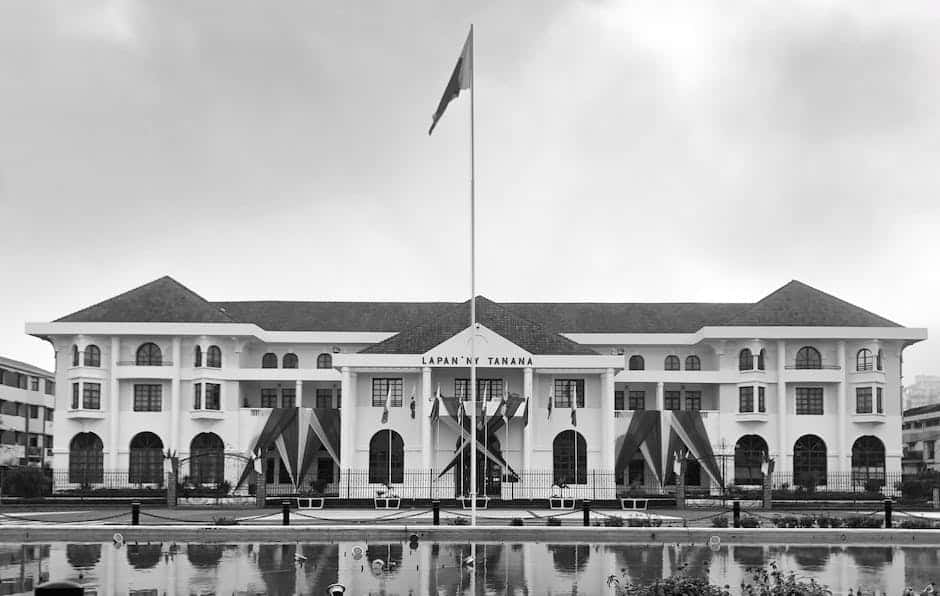
Imagine wandering through the bustling streets of Antananarivo, where the whispers of history echo through the air. The architecture of Madagascar’s capital is a tapestry woven with threads of the past and present, each building telling its own story. As I meander through the city, I can’t help but be captivated by the evolution of its architectural landscape.
The Roots of Malagasy Architecture
The early architecture of Antananarivo was profoundly influenced by the Austronesian settlers, who brought with them the construction techniques that would define the island’s early structures. The use of wood and plant materials was prevalent, with the iconic Austronesian longhouse serving as a blueprint for communal living.
As time marched on, the Merina Kingdom left an indelible mark on the city’s skyline. The Rova of Antananarivo, a royal palace complex, stands as a testament to the ingenuity of the Malagasy people. Its construction, using a mix of indigenous and imported materials, symbolizes a pivotal moment in the architectural narrative of the city.
Colonial Influences and Urban Expansion
With the arrival of European colonizers in the 19th century, Antananarivo’s architecture began to morph once again. The French introduced brick-making, which revolutionized building practices. Colonial buildings, characterized by their sturdy construction and ornate details, sprang up, juxtaposing the traditional Malagasy style.
The city expanded, and neighborhoods like Isoraka and Antaninarenina became showcases of colonial elegance. Balconies, verandas, and gardens became the norm, as Antananarivo’s elite embraced these foreign architectural trends.
Post-Independence Architectural Renaissance
Madagascar’s independence in 1960 heralded a new era for Antananarivo’s architecture. There was a conscious effort to blend modernity with Malagasy traditions. Buildings like the Anosy Lake Avenues exemplify this, where contemporary design elements are seamlessly integrated with the lush, tropical surroundings.
Today, the city is a melting pot of architectural styles. From the traditional wooden houses of the Zafimaniry people to the sleek glass facades of modern business districts, Antananarivo’s skyline is a reflection of its rich, diverse history.
Preservation and Innovation: A Balancing Act
Preserving the architectural heritage while fostering innovation is a challenge Antananarivo faces. Efforts to maintain historical sites, like the Queen’s Palace restoration after a devastating fire, are crucial in keeping the city’s past alive.
Concurrently, new construction projects often incorporate sustainable materials and green spaces, reflecting a growing environmental consciousness. This delicate balance between old and new is what gives Antananarivo its unique charm.
FAQs
- What are some iconic examples of traditional Malagasy architecture in Antananarivo?
The Rova of Antananarivo and the wooden houses of the Zafimaniry people are iconic examples that showcase the intricate woodworking skills and traditional design.
- How did French colonialism influence the architecture of Antananarivo?
French colonialism introduced new materials like brick and European architectural styles, which led to the construction of buildings with ornate details and the urban expansion of the city.
- Are there any efforts to preserve Antananarivo’s architectural heritage?
Yes, there are restoration projects, such as the one for the Queen’s Palace, and laws in place to protect historical buildings and sites within the city.
Conclusion
In conclusion, Antananarivo’s architecture is a living museum, showcasing the evolution from wooden palisades to colonial mansions and modern skyscrapers. It’s a city where each corner tells a story, each building a chapter in the history of Madagascar. The city’s ability to preserve its past while embracing the future makes it a fascinating case study for architects and historians alike.
As we’ve explored, the architectural journey of Antananarivo is a testament to the resilience and adaptability of its people. From the traditional to the colonial, and now to the contemporary, the city’s buildings reflect a society that has continually evolved while staying true to its roots. For anyone interested in the confluence of culture and design, Antananarivo is a destination that does not disappoint.
Whether you’re a real estate investor, a homeowner, or simply a lover of history and architecture, Antananarivo offers a unique glimpse into the heart of Madagascar. Its architecture is not just about buildings; it’s about the soul of a city that has stood the test of time.